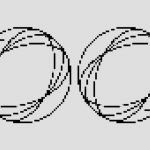
skate truck size guide
Choosing the right skate truck size is crucial for optimal performance‚ stability‚ and control․ Trucks directly impact how your skateboard handles‚ making proper sizing essential for all riders․ By matching truck width to deck width and considering skating style‚ you ensure a smoother‚ more responsive ride․ This guide provides a comprehensive overview to help you make informed decisions․
1․1 Importance of Proper Truck Size
Proper truck size is essential for optimal skateboard performance‚ stability‚ and control․ It ensures compatibility with deck width‚ wheel size‚ and riding style‚ providing a balanced and responsive ride․ Incorrect sizing can lead to poor maneuverability‚ reduced stability‚ and increased risk of wheel bite․ Matching truck width to deck width ensures even weight distribution and enhances overall skating experience‚ making it a critical factor for skaters of all levels․
1․2 Overview of Skate Truck Components
Skate trucks consist of the axle‚ hanger‚ baseplate‚ and kingpin․ The axle holds the wheels‚ while the hanger provides stability․ The baseplate mounts to the deck‚ and the kingpin secures the hanger to the baseplate․ Together‚ these components determine truck width and performance․ Understanding each part helps in selecting the right size and ensuring compatibility with your skateboard setup for optimal functionality and durability․
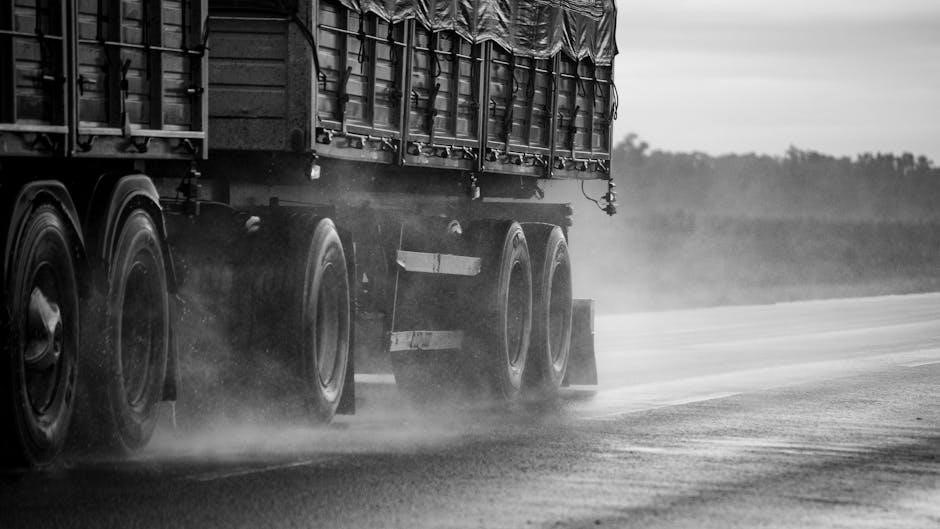
Understanding Skate Truck Measurements
Skate truck measurements are crucial for ensuring proper fit and performance․ They determine how well your trucks align with your deck and wheels‚ affecting stability and control․
2․1 Axle Width vs․ Hanger Width
Axle width refers to the distance between the outermost points of the truck’s axle‚ while hanger width measures the inner part holding the wheels․ Both impact how wheels are positioned relative to the deck․ Proper alignment ensures stability and control․ For example‚ a 7․75″ deck pairs well with a 5․0″ truck‚ balancing performance and responsiveness․ Understanding these measurements is key to optimizing your skateboard’s setup and ride quality․
2․2 How Truck Size Relates to Deck Width
Truck size should align with deck width for optimal performance․ A truck that is too wide or narrow can affect stability and control․ For instance‚ a 7․75″ deck typically pairs with a 5․0″ truck‚ ensuring proper wheel placement and balance․ Matching truck width to deck width enhances maneuverability and prevents issues like wheel bite․ Proper fitment ensures a responsive and stable ride‚ catering to both casual and advanced skaters․
2․3 Wheelbase and Its Role in Truck Size
Wheelbase‚ the distance between the front and rear truck mounting holes‚ is directly influenced by truck size․ A longer wheelbase‚ typically between 25-27 inches‚ offers stability and is ideal for cruisers or downhill skating․ Shorter wheelbases enhance maneuverability‚ suiting street or technical skating․ Proper truck size ensures the wheelbase aligns with your skating style‚ affecting how your board turns and responds to movements‚ making it a critical factor in overall performance and ride quality․
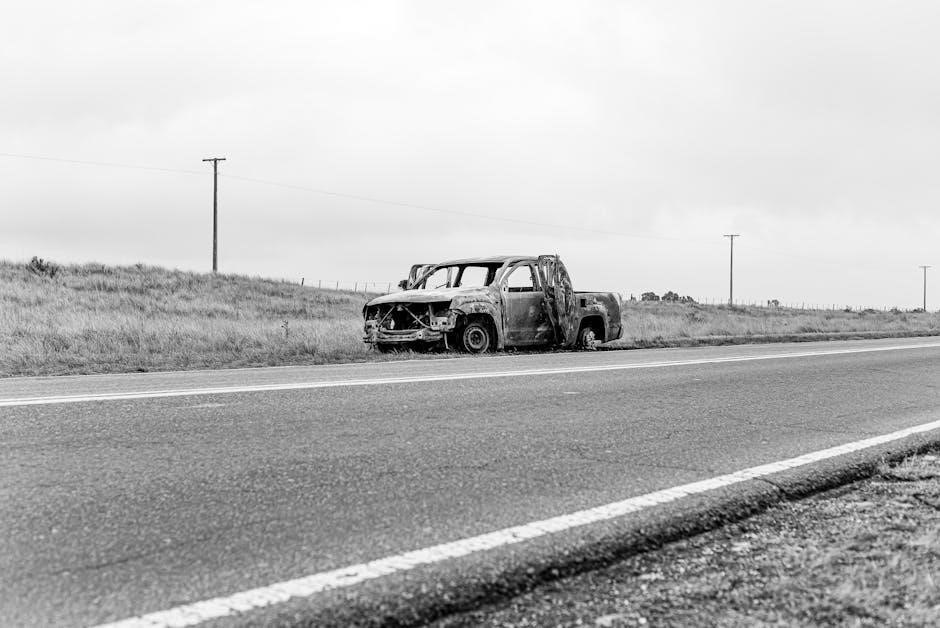
Choosing the Right Truck Size
Matching the truck size to your deck width ensures optimal performance and control․ Consider your skating style and wheel size compatibility to select the perfect fit for your setup․
3․1 Matching Truck Width to Deck Width
Properly matching truck width to deck width is essential for stability and control․ A truck that’s too wide or narrow can affect performance․ Measure the axle or hanger width‚ ensuring it aligns closely with your deck’s width․ For example‚ a 7․75″ deck typically pairs with a 5․0″ truck․ This proportional fit ensures optimal handling and prevents issues like wheel bite or poor maneuverability‚ enhancing your overall skating experience․
3․2 Deck-Truck Compatibility Chart
A deck-truck compatibility chart simplifies pairing your skateboard deck with the right truck size․ For example‚ a 7․75″ deck typically pairs with a 5․0″ truck‚ while an 8․0″ deck matches a 5․25″ truck․ These proportions ensure proper fit and performance․ Always refer to the manufacturer’s compatibility chart‚ as some brands offer specific sizing recommendations․ This tool helps skaters avoid issues like wheel bite or unstable rides‚ ensuring optimal setup for their skating style․
3․3 Wheel Size Considerations
Wheel size plays a crucial role in truck compatibility․ Larger wheels require wider trucks to prevent wheel bite‚ while smaller wheels work best with narrower trucks․ Ensure your wheel size aligns with your truck width for optimal performance․ Proper pairing enhances stability‚ maneuverability‚ and control․ Incorrect wheel-to-truck sizing can lead to poor responsiveness or instability․ Always match your wheel size to your truck size for a smooth‚ controlled ride tailored to your skating style․
Types of Skate Trucks
Skate trucks come in various types‚ including standard kingpin‚ reverse kingpin‚ and specialty trucks․ Each type offers unique performance characteristics suited for different skating styles and preferences․
4․1 Standard Kingpin Trucks
Standard kingpin trucks are the most common type‚ featuring a traditional design with a kingpin that holds the hanger and baseplate together․ They are versatile‚ suitable for street skating‚ park skating‚ and cruising․ These trucks are known for their stability and maneuverability‚ making them a popular choice for skaters of all levels․ They are compatible with most deck widths and are ideal for those who prefer a classic‚ reliable setup․
4․2 Reverse Kingpin Trucks
Reverse kingpin trucks feature a kingpin placed in the opposite direction compared to standard trucks‚ offering enhanced stability and turning capabilities․ They are ideal for downhill skating and freeride‚ as they provide better lean and control at higher speeds․ The unique design reduces wheel bite and improves maneuverability‚ making them a favorite among skaters seeking high-performance handling for more aggressive riding styles․
4․3 Specialty Trucks for Different Riding Styles
Specialty trucks cater to specific skating disciplines‚ offering tailored performance․ For example‚ longboard trucks with reverse kingpins excel in downhill racing‚ while carving trucks provide tight turns for surf-style skating․ Cruiser trucks often feature softer bushings for smooth rides‚ and trick trucks are reinforced for durability․ Each style ensures optimal functionality‚ making it easier for skaters to choose gear that aligns with their unique preferences and skating goals․

Factors Affecting Truck Size Selection
Skate truck size selection is influenced by deck width‚ skating style‚ and wheel size․ Personal comfort and performance needs also play a significant role․
5․1 Skating Style and Preferences
Your skating style significantly impacts truck size selection․ Cruisers may prefer wider trucks for stability‚ while trick riders opt for narrower ones for easier flips․ Personal preferences‚ such as tight or loose trucks‚ also influence turning responsiveness․ Additionally‚ wheel size compatibility ensures proper fitment‚ avoiding wheel bite and enhancing maneuverability․ Balancing these factors ensures a setup tailored to your riding style and performance needs․
5․2 Deck Width and Shape
Deck width plays a critical role in determining truck size‚ as trucks must align with the deck’s width for optimal performance․ A wider deck requires wider trucks to maintain stability and prevent wheel bite․ Conversely‚ narrower decks pair with narrower trucks for precise control․ The deck’s shape also influences truck placement‚ ensuring even weight distribution and proper wheel alignment․ Matching truck width to deck dimensions ensures a balanced and responsive ride;
5․3 Personal Comfort and Performance Needs
Personal comfort and performance needs significantly influence truck size selection․ Riders seeking stability may prefer wider trucks‚ while those prioritizing maneuverability opt for narrower ones․ Consider your skating style—street‚ park‚ or cruiser—as it dictates the required responsiveness and control․ Ensuring your trucks align with your comfort and performance preferences enhances your overall skating experience and ensures optimal deck-truck compatibility for your unique riding style․

Benefits of Properly Fitted Trucks
Properly fitted trucks enhance stability‚ maneuverability‚ and control‚ ensuring a smoother ride․ They improve responsiveness and reduce wear on wheels‚ optimizing overall skating performance and comfort․
6․1 Improved Stability and Balance
Properly fitted trucks ensure optimal wheel placement‚ enhancing stability and balance․ Correct sizing prevents wheel bite and improves weight distribution‚ allowing for smoother turns and better control․ This setup helps riders maintain balance‚ especially at higher speeds‚ and reduces the risk of wobbling or losing traction․ Well-aligned trucks also promote even wear on wheels‚ contributing to consistent performance and a more enjoyable skating experience overall․
6․2 Enhanced Maneuverability and Control
Properly sized trucks significantly enhance maneuverability and control by providing precise turning and responsive handling․ Ensuring the truck width aligns perfectly with the deck width allows for optimal performance‚ enabling riders to execute sharp turns and maintain control effortlessly․ This ideal setup supports better balance‚ ensuring it’s easier to perform tricks and navigate various terrains with confidence and precision․
6․3 Reduced Risk of Wheel Bite
Properly sized trucks reduce the risk of wheel bite‚ where wheels rub against the deck during sharp turns․ Correct truck width ensures wheels align with the deck‚ preventing this issue․ This alignment improves stability‚ allowing smoother turns and better control․ With reduced wheel bite‚ riders experience enhanced maneuverability and a safer‚ more enjoyable skateboarding experience․

How to Install Skate Trucks
Installing skate trucks requires a screwdriver‚ bolts‚ and a socket wrench․ Mount the trucks to the deck‚ align them evenly‚ and tighten the bolts securely for proper stability․
7․1 Tools and Materials Needed
To install skate trucks‚ you’ll need a screwdriver‚ Allen wrench or skate tool‚ and a socket wrench for tightening bolts․ Additional materials include truck bolts‚ nuts‚ and riser pads if desired․ Ensure all tools are compatible with your truck’s hardware for a secure and proper installation․ Having these items ready will make the process smoother and ensure your trucks are mounted safely and effectively․
7․2 Step-by-Step Installation Process
Place the trucks onto the deck‚ ensuring they are evenly centered․ Mark the bolt holes with a pencil․ Drill pilot holes to avoid splitting the wood; Bolt the trucks securely using the appropriate hardware․ Tighten the bolts firmly but avoid over-tightening․ Double-check the alignment and ensure the trucks are evenly spaced for optimal performance and stability․ Repeat the process for the second truck‚ maintaining consistency for a balanced setup․
7․3 Tightening and Adjusting Trucks
Tighten the truck bolts firmly using an Allen wrench‚ ensuring even pressure to avoid uneven wear․ Over-tightening can restrict movement‚ while under-tightening may cause instability․ Adjust the kingpin nut for optimal turning response․ Test the trucks by leaning and turning to ensure proper alignment․ Fine-tune the tightness based on your skating style for the perfect balance of stability and maneuverability․ Regular adjustments are essential for maintaining performance and longevity․
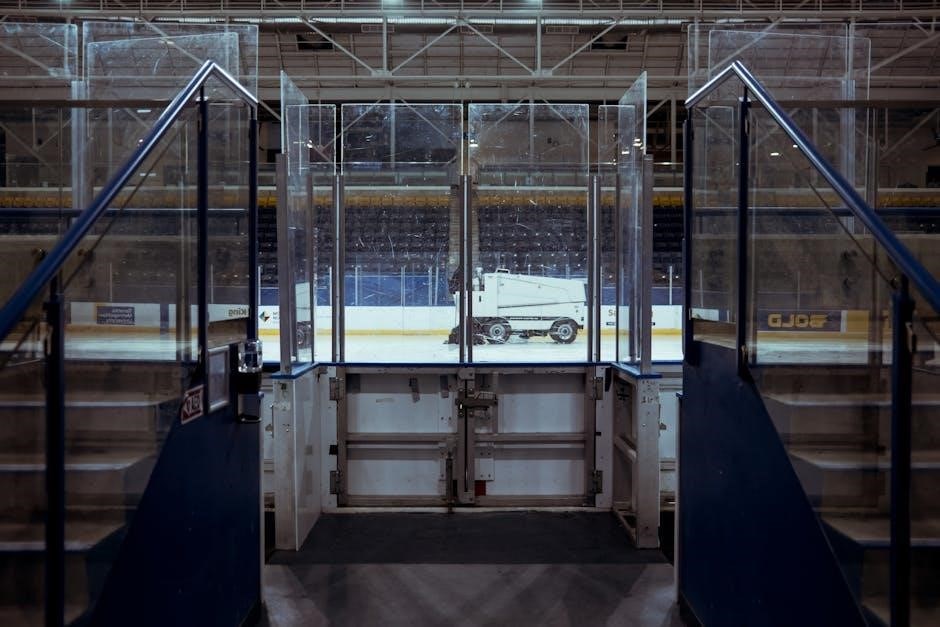
Common Mistakes to Avoid
Choosing trucks too wide or narrow for your deck‚ ignoring wheel size compatibility‚ and over-tightening bolts are common errors․ These mistakes can hinder performance and stability․
8․1 Choosing Trucks Too Wide or Too Narrow
Choosing trucks that are too wide or too narrow for your deck can lead to poor stability and performance․ If trucks are too wide‚ they may cause the wheels to stick out excessively‚ while trucks that are too narrow can result in inadequate support and uneven wear․ Always ensure the truck width aligns with your deck’s dimensions for optimal performance and to prevent issues like wheel bite or poor turning․ Proper sizing enhances both stability and control‚ making it essential to match truck width to deck width accurately․
8․2 Ignoring Wheel Size Compatibility
Overlooking wheel size compatibility can lead to poor performance and stability issues․ Larger wheels may require wider trucks to prevent excessive wheel exposure‚ while smaller wheels with wide trucks can cause insufficient grip․ Properly matching truck width to wheel size ensures optimal handling‚ preventing issues like wheel bite or uneven wear․ Always consider both truck and wheel dimensions for a balanced setup that enhances control and maneuverability․
8․3 Incorrect Tightening of Truck Bolts
Improperly tightening truck bolts can lead to performance issues and safety risks․ Over-tightening may damage the deck or restrict movement‚ while under-tightening can cause instability․ Always use a torque wrench and follow manufacturer guidelines to ensure bolts are securely fastened without overdoing it․ Proper tension ensures optimal stability‚ control‚ and longevity of your skateboard components‚ avoiding potential hazards during rides;

Troubleshooting Truck Issues
Troubleshooting truck issues involves identifying common problems like instability or poor turning response․ Causes often include incorrect sizing‚ worn parts‚ or improper alignment․ Adjustments or replacements may be needed for optimal performance․
9․1 Fixing Loose or Wobbly Trucks
Loose or wobbly trucks can compromise stability and control․ To fix‚ tighten the kingpin bolt gradually‚ ensuring even pressure․ Check and tighten axle nuts if they’re loose․ Replace worn-out bushings or pivot cups‚ as they often cause wobble․ Lubricate moving parts and test the trucks by leaning and turning to ensure stability․ Proper tightening and maintenance can restore performance and safety․
9․2 Addressing Uneven Wear on Wheels
Uneven wheel wear often results from improper truck alignment or size mismatch․ Ensure trucks are proportional to deck width and adjust them for even weight distribution․ Rotate wheels periodically to distribute wear evenly․ Check for loose components and tighten them․ If wear persists‚ consider replacing wheels or adjusting your skating technique to avoid excessive stress on specific areas․
9․3 Solving Turning and Stability Problems
Turning and stability issues often stem from incorrect truck size or improper setup․ Ensure trucks are proportional to your deck width and adjust tightness for better response․ Check wheel alignment and replace worn bushings or bearings․ Proper truck width and wheel size alignment can significantly improve stability and maneuverability‚ ensuring a smoother and more controlled ride․

Maintenance Tips for Skate Trucks
Regularly clean and lubricate trucks to ensure smooth movement․ Replace worn-out components like bushings and bearings․ Tighten loose bolts and adjust kingpins for optimal performance and stability․
10․1 Cleaning and Lubricating Trucks
Regular cleaning and lubrication are essential for maintaining smooth performance and extending the life of your skate trucks․ Use a soft brush to remove dirt and debris from pivot cups‚ axles‚ and bushings․ Clean with mild soap and water‚ then rinse thoroughly and dry․ Apply a high-quality‚ water-resistant lubricant to moving parts like the pivot cup and axle․ This reduces friction‚ ensuring smoother turns and longer-lasting components․ Avoid over-lubricating‚ as it can attract more dirt and grime․
10․2 Replacing Worn-Out Parts
Regularly inspect your trucks for worn-out parts‚ such as bushings‚ pivot cups‚ and axles․ Replace bushings if they show excessive wear or lose their shape‚ as this can affect turning performance․ Worn pivot cups can cause instability‚ so swap them when necessary․ Always use high-quality replacement parts that match your truck size and style․ Refer to manufacturer guidelines for proper installation to ensure optimal functionality and safety․ Timely replacements prevent further damage and maintain your skateboard’s performance․
10․3 Regular Adjustment and Tuning
Regular adjustment and tuning of your skate trucks are essential for maintaining optimal performance․ Tighten the kingpin bolt for stability and loosen it for easier turning; Lubricate the moving parts periodically to ensure smooth operation․ Align the trucks symmetrically for even wear and consistent handling․ Adjust the tightness based on your skating style and preference․ Regular tuning prevents wear and enhances control‚ keeping your skateboard in top condition․ Always follow manufacturer guidelines for proper tuning procedures․
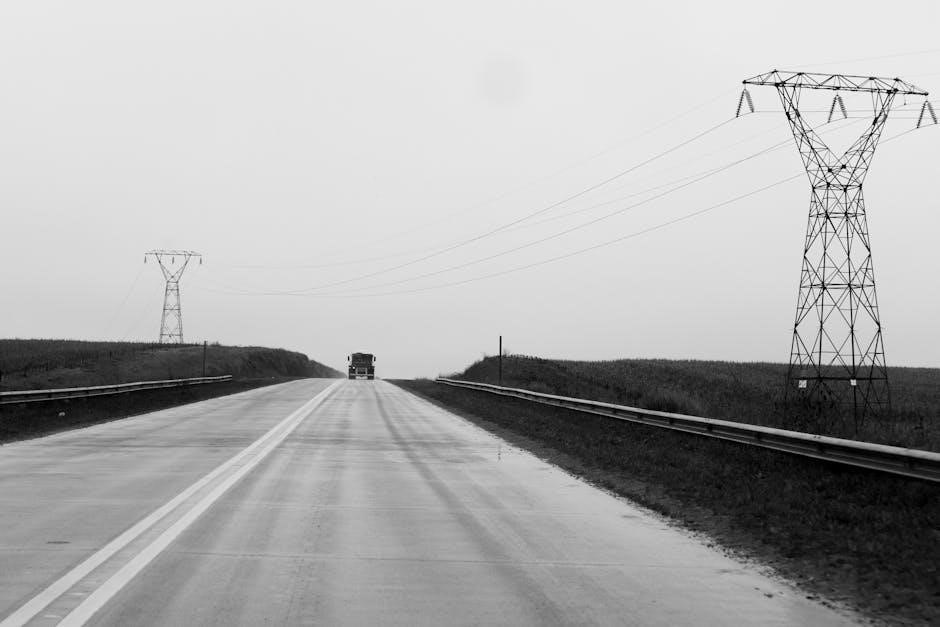
Future Trends in Skate Truck Technology
Innovations in materials and design are expected to enhance durability and performance․ Customization options and sustainable manufacturing practices are anticipated to shape the future of skate trucks․
11․1 Innovations in Materials and Design
Innovations in materials and design are revolutionizing skate trucks․ Lightweight‚ durable metals like aluminum alloys and titanium are being used to enhance strength-to-weight ratios․ Carbon fiber components are also emerging for improved responsiveness․ Design advancements include adjustable kingpins‚ customizable bushing systems‚ and modular constructions․ These innovations aim to provide better stability‚ maneuverability‚ and personalization options for riders; Sustainability is also a focus‚ with eco-friendly materials being explored for future truck manufacturing․
11․2 Advancements in Customization Options
Advancements in customization options allow riders to tailor skate trucks to their unique preferences․ Adjustable kingpins‚ customizable bushings‚ and interchangeable components enable personalized setups․ Modular designs let users swap parts like hangers and axles for specific skating styles․ These innovations empower skaters to fine-tune their trucks for optimal performance‚ whether cruising‚ carving‚ or performing tricks․ Customization options enhance the riding experience by aligning truck configurations with individual needs and preferences․
11․3 Sustainability in Truck Manufacturing
Sustainability in skate truck manufacturing is gaining traction‚ with brands prioritizing eco-friendly materials and practices․ Recycled metals‚ energy-efficient production processes‚ and waste reduction initiatives are becoming common․ Companies are also exploring biodegradable components and repair-friendly designs to extend product lifecycles․ These advancements not only reduce environmental impact but also align with consumer demand for responsible manufacturing‚ ensuring high-performance trucks while promoting a greener future for skateboarding․
Selecting the right skate truck size ensures optimal performance‚ stability‚ and control․ Proper fit enhances your skating experience‚ while future trends promise innovation and sustainability․ Happy shredding!
12․1 Summary of Key Takeaways
Proper truck size enhances stability‚ control‚ and overall skating performance․ Match truck width to deck width for optimal fit‚ ensuring wheels align with the deck․ Consider skating style‚ wheel size‚ and truck type—standard or reverse kingpin․ Future trends include innovative materials and sustainable manufacturing․ Always test different setups and stay informed about new technologies to elevate your skating experience․
12․2 Final Tips for Choosing the Right Trucks
Always match truck width to deck width for optimal performance․ Consider your skating style‚ wheel size‚ and riding preferences․ Test different setups to find your perfect fit․ Stay informed about new technologies and innovations in truck design․ Finally‚ seek advice from experienced skaters or trusted resources to ensure you make the best choice for your skating needs and goals․
